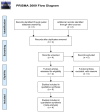The use of biatain Ag in hard-to-heal venous leg ulcers: meta-analysis of randomised controlled trials
- PMID: 23843984
- PMCID: PMC3699549
- DOI: 10.1371/journal.pone.0067083
The use of biatain Ag in hard-to-heal venous leg ulcers: meta-analysis of randomised controlled trials
Abstract
Background: Venous leg ulcers are common, troublesome, and their failure to heal is often related to a heavy bio-burden. Ionized silver has both anti-inflammatory and antimicrobial properties. The ulcer healing properties of the silver releasing foam dressing Biatain Ag has been examined in 4 randomized controlled trials (RCTs).
Aim: To evaluate ulcer healing through a meta-analytic approach after treatment with either Biatain Ag or a non-active dressing.
Patients and methods: 685 subjects with pure or mixed hard-to-heal venous leg ulcers were included in the meta-analysis.
Results: Biatain Ag showed a significant treatment effect (p<0.0001), responder rate (p<0.001), and healing rate (p = 0.002).
Conclusion: The meta-analysis of the 4 RCTs provided statistical significant evidence to support the use of Biatain Ag dressing in treatment of hard-to-heal venous leg ulcers.
Conflict of interest statement
Figures


References
-
- Mekkes JR, Loots MA, van der Wal AC, Bos JD (2003) Causes, investigation and treatment of leg ulceration. Br J Dermatol 148: 388–401. - PubMed
-
- Baker SR, Stacey MC, Singh G, Hoskin SE, Thompson PJ (1992) Aetiology of chronic leg ulcers. Eur J Vasc Surg 6: 245–251. - PubMed
-
- Cornwall JV, Dore CJ, Lewis JD (1986) Leg ulcers: epidemiology and aetiology. Br J Surg 73: 693–696. - PubMed
-
- Margolis DJ, Bilker W, Santanna J, Baumgarten M (2002) Venous leg ulcer: incidence and prevalence in the elderly. J Am Acad Dermatol 46: 381–386. - PubMed
-
- Ayello EA, Cuddigan JE (2004) Conquer chronic wounds with wound bed preparation. Nurse Pract 29: 8–25. - PubMed
Publication types
MeSH terms
Substances
LinkOut - more resources
Full Text Sources
Other Literature Sources

